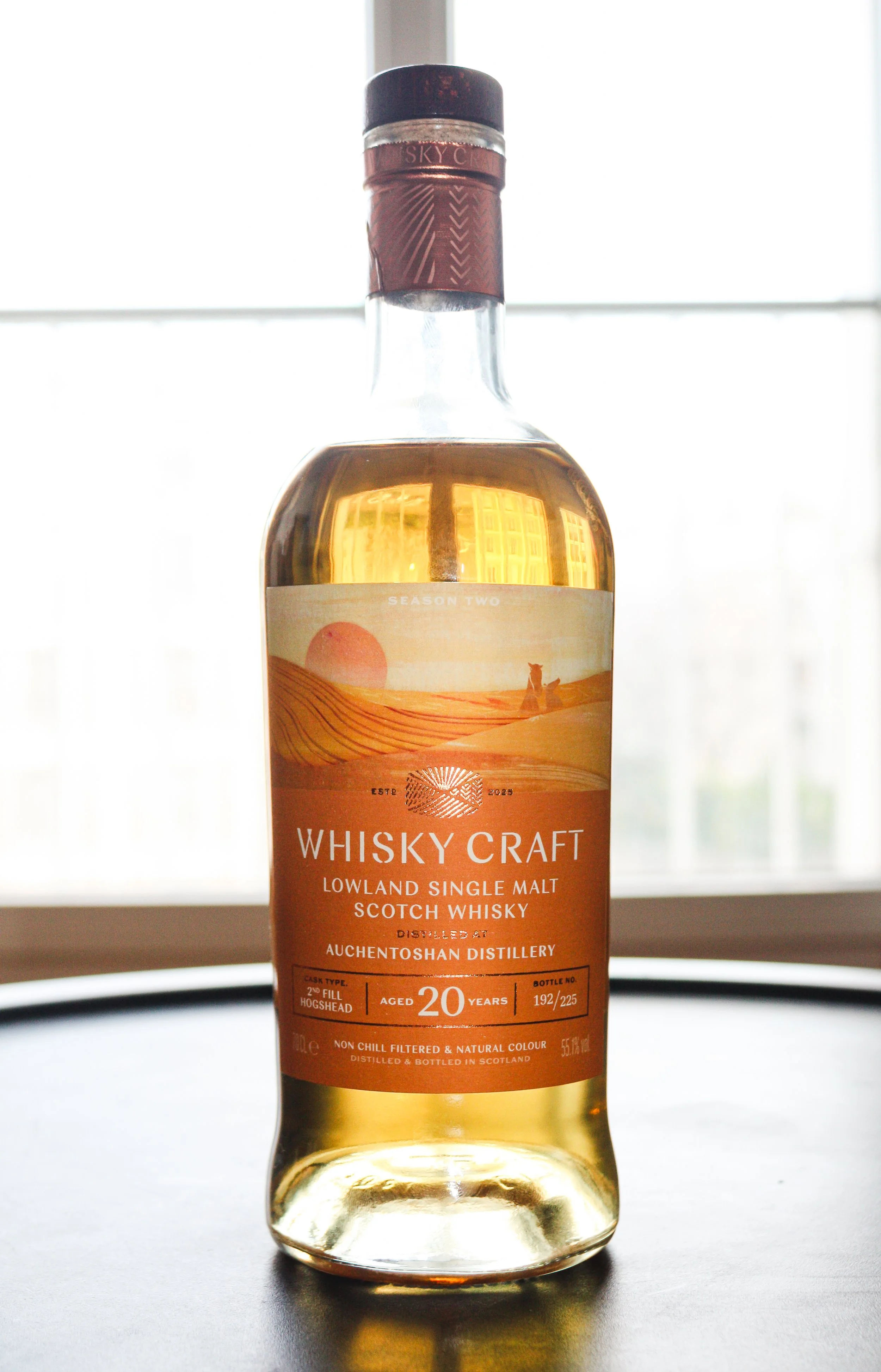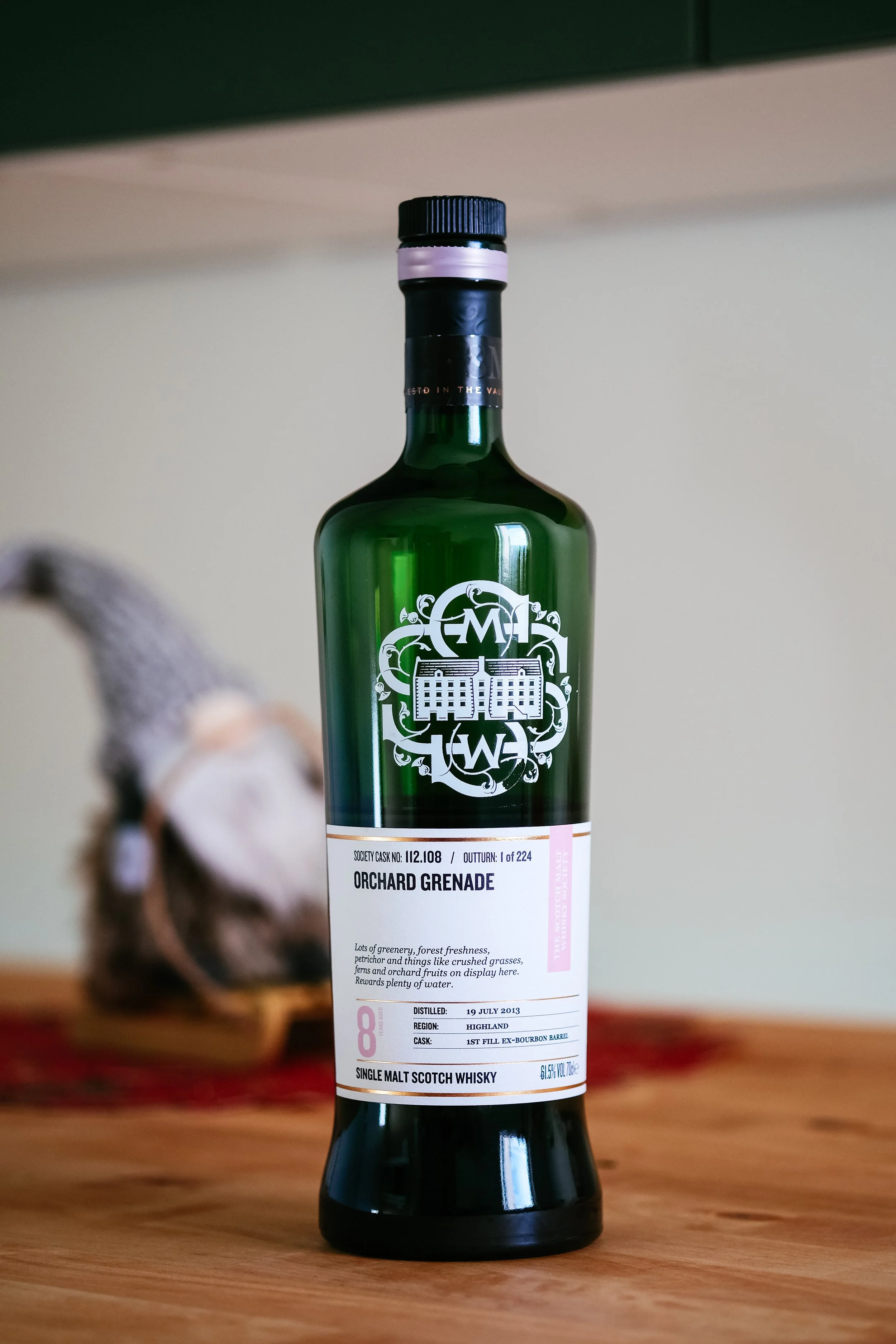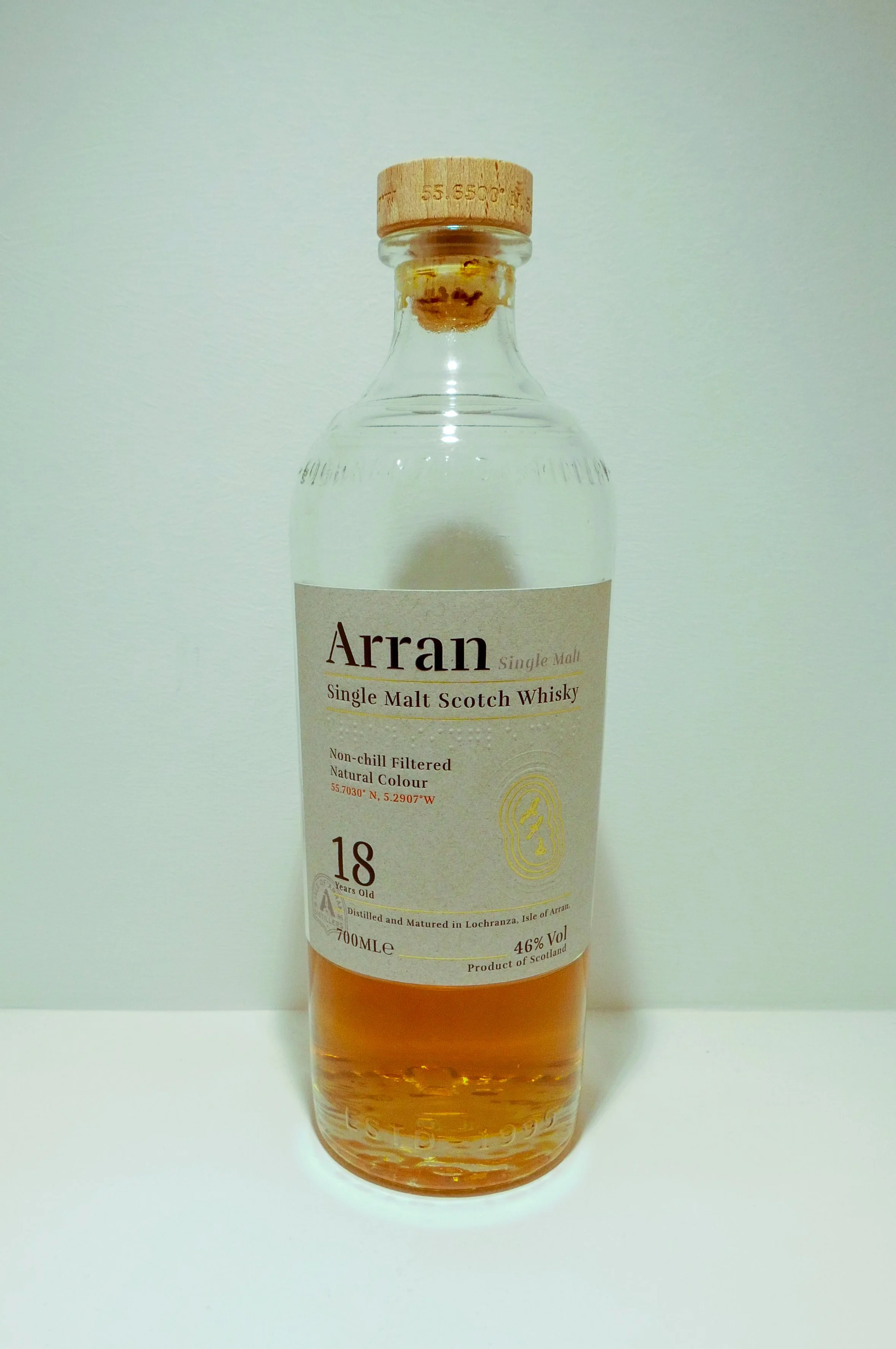Ironworks Heart Iron Canadian Single Malt
Official Release | 42% ABV
Score: 5/10
Average. In a good way.
TL;DR
Good price, good story, good whisky. Surprise! — it’s good.
Dark. Approachable. Drammable.
A small tourist-trap-appearing town with a small distillery? It seemed to be a recipe for disappointment, but I was in for a surprise!
A recent vacation to Nova Scotia warranted a stop by Ironworks Distillery in Lunenburg to check out their single malt whisky.
The general atmosphere in colourful Lunenburg is intoxicating. This small village (and I do mean small; it’s only 2,200 people or so) is perched on a beautiful bay with buildings and streets oozingt the charm of days gone by. Now for some readers residing in regions where history is in abundance, this might seem rather blasé, but for me, it was downright cool. The gentle and clean seaside air wafting in your face, the sounds of waves crashing into rocks and piers, and the bustle of a working dock were relaxing and mesmerising to someone coming from my prairie-agricultural home base. Rows upon rows of centuries-old buildings clad in bright paint schemes, offering all sorts of unique stories from sailors and captains to colourful denizens of times past, kept me busy reading placards.
Having ducked into a restaurant with patio overlooking the docks for some of the best scallops I have ever had (accompanied by a crisp and refreshing Nova Scotian cider), we politely asked our waiter where we might find the distillery — we were experiencing some cellular data challenges.
“Just down the street!”, was the prompt and friendly reply. Perfecto! After recharging on said food and beverage, we set off to find Ironworks with my vibrating three-year old and squirmy nearly-one-year old in tow.
Over a century of Iron
Cruising along narrow streets only a few hundred feet from the waterfront, we finally came across Ironworks, which inhabits the historical blacksmith’s shop that served the fishing community for 111 years. Its blackened wood-shingled exterior and double-wide front door hinted at the history of the place. Looking at the images and stories shared throughout the distillery, one can easily see that very little has changed regarding the exterior of this historic building, which once built anchors, chains, clevises, and all manner of ship-related forged items.
Walking into the distillery, you immediately feel the size and intimacy of the operation. The reception, store, tasting counter, checkout till, and German-made wood-fired MÜLLER copper pot occupy only 400 square feet (37 square meters) — guesstimated by yours truly — just inside the front entrance. I was able to walk right up the still, which was filled with wash but not boiling yet, without so much as a dirty how-dare-you look. A second still, nicknamed Ruby, resides elsewhere in the retired blacksmithing shop. It was an ultra-cool experience thus far.
Drawing on the rich history of Lunenburg and the blacksmithing shop, Ironworks have aptly named their only single malt whisky release ‘Heart Iron.’ The heart iron is a heart-shaped ring atop the main mast of the Bluenose II, a 1960s-built replica of the famous working fishing schooner Bluenose. The blacksmithing shop’s founder forged the first heart iron for the first Bluenose in 1921, and his grandson forged the second heart iron for Bluenose II.
“A celebrated racing ship and fishing vessel, Bluenose, under the command of Angus Walters, became a provincial icon for Nova Scotia and an important Canadian symbol in the 1930s, serving as a working vessel until she was wrecked in 1946. Nicknamed the “Queen of the North Atlantic”, she was later commemorated by a replica, Bluenose II, built in 1963. The name Bluenose originated as a nickname for Nova Scotians from as early as the late 18th century.”
The Bluenose is steeped in Canadian history; it is even memorialised on our $0.10 coin and represents the spirit of Nova Scotians at the turn of the 20th century. Hand-built in 96 days in Lunenburg with the sole intent of beating American racing boats, Bluenose remained the winningest ship in the International Fishermen’s Cup, beating newly-minted and racing-bred American ships 10 years its junior — all while fishing for cod off the Grand Banks during the racing off-season! The distillery keeps the original brickwork from the forges and is a stone’s throw away from the moored Bluenose II — the heritage link Ironworks is drawing upon can be in no doubt.
Now, this is the point where I should be able to recount some unique tidbits from the distillery about the distillation, fermentation, and ageing of Heart Iron whisky. Alas, Dramface readers will have to forego a wander down nerdy lane. It was a hot, sticky day in Lunenburg, with a feels-like temperature nearing 40 ºC that was succeeding in melting my travel-weary children. After an already-long day of touring, indulging myself in a lengthy discussion with Ironworks staff would not have been in the best interest of everyone’s sanity given the 1.5-hour trip back to comfort which remained that evening. Seeing as we were nearing the end of our vacation some 4,900 kms from home, I wasn’t one to rock the boat and try to force our stay. So readers will have to make do with pieced-together information, given my rushed visit to this small and humbling distillery.
This single malt is comprised of a local malted barley and an unknown portion of peated English malt from Thomas Fawcett & Sons. A bit of Googling says this malt is in the 15–25 ppm phenol content range. Following 3–5 day fermentation and double distillation, the spirit is reduced to 55% ABV and placed into 110- and 225-liter ex-bourbon American oak and virgin Hungarian oak or sometimes French oak barrels and left to age for three years or more (the minimum age to be legally labeled as whisky in Canada). From my distillery visit, it would appear that current and future releases will rely on the ex-bourbon American oak and Hungarian oak combinations for Heart Iron.
Review
Ironworks Heart Iron, 42% ABV
CA$37 (£24) for 50cl, available online or at the distillery
The relatively young age (3–4 years) and rather dark natural colour of this whisky have me intrigued. The story of Heart Iron, Ironworks, and Lunenburg have been cemented into my brain from my recent vacation, but now that I’m back home and cracking the bottle for the first time, I feel some trepidation. What should I expect from such a small craft distillery that ages its whisky a mere hundred feet or so from the ocean? Is it going to be funky and dungeon-y like some craft distilleries can be, will I find the all-too-often-referenced salinity associated with oceanside maturation, or will I be enveloped in a vanilla or spice bomb (given the cask choices)? Let’s crack on and let the whisky do the talking, I mean, writing.
Nose
The nose is light and dense. Is that a thing? It doesn’t jump out of your glass like a higher-proofed whisky (hence the light), but it is full of densely-flavoured items. You won’t be finding light-fleshed fruity notes here; it’s all dark and warm flavours. Baked spice cake with a light caramel drizzle. Dark Demerara sugar and vanilla mingle just as if you were mixing them together in a bowl for baking. Ooh, I’m excited to dip into this.
Palate
That same density thing appears on the palate. Charred vanilla, Demerara sugar, and a beautifully balanced level of barrel spice notes of nutmeg and cinnamon, coming from the judicious use of Hungarian Oak in these vattings, are immediately apparent. Repeated forays reveal hints of charred coconut and wood char, complementing the sweeter vanilla and sugar notes. Surprisingly, this whisky has a syrupy mouthfeel and a good viscosity too. Not a watered down expression, then, but what would appear to be a carefully chosen proof that walks the tightrope of mouthfeel, flavours, and drinkability.
The Dregs
The finish is unexpected for me. I’m usually a proof-chaser, preferring 46% and above whiskies owing to their ability to remain on your palate. I was therefore fully expecting this “low” proofer to come and go in a hurry. Well, was I surprised here! Dark brown sugar cookies alongside lightly charred vanilla dipped in caramel sauce lingered on my palate for minutes, ensuring my mouth remained watering and deterring me from reaching for another nip. That said, minimal vestiges of the Hungarian oak spiciness remained on the finish, likely owing to the approachable 42% ABV. Letting the mind wander, some flashes of the spice cake or even banana bread, perhaps if these were soaked in whisky, popped up again after some time.
Now, astute drammers will notice that my tasting notes did not hint at traces of peat-related descriptors. I suspect that either the peated malt content is quite low in the overall mashbill or the distillation cut points nipped some of the peatiness out of the new make spirit, but the reason may also be more subtle. My quick poke around the Forsyths still revealed that Ironworks has the ability to fit bubble plates during distillation runs, significantly increasing the reflux and refining the spirit by inhibiting the transmission of the heavier compounds usually associated with peated malts. Perhaps the lack of defined peat characteristics is a combination of lower peated malt content and some additional refining during distillation? Regardless, I find that peated malts can more easily sustain being proofed down to the low-40s ABVs and retain some semblance of mouthfeel and the ability for flavor to linger on your palate long after your last sip. I suspect Heart Iron’s depth of flavor and retention on the palate are owed to the peated malt combined with a lack of chill filtration. Bravo!
Overall, this whisky is well-integrated and cohesive. The low proof and price might fool some into passing it by as another budget variety, but for nearly the same price once adjusted by volume, it’s a no-brainer that Heart Iron is the winner against such drinks. It has an intensity of flavor and length of finish that belie its age and shame the commonplace, entry-level, 40% ABV, chill-filtered, and colored-to-their-limits 10-to-12-year-old releases from certain big brands.
I’m kicking myself for not snagging a replacement bottle while I was nearly across the continent but, alas, I did not know I would enjoy it so much. I will be keeping my eye on Ironworks with the hope that they will release a higher-proofed vatting or perhaps even a single-cask outturn. One can dream, right?
Score: 5/10
Tried this? Share your thoughts in the comments below. BB
-
Dramface is free.
Its fierce independence and community-focused content is funded by that same community. We don’t do ads, sponsorships or paid-for content. If you like what we do you can support us by becoming a Dramface member for the price of a magazine.
However, if you’ve found a particular article valuable, you also have the option to make a direct donation to the writers, using links at the foot of articles - you’d make their day. Thank you.
For more on Dramface and our funding read our about page here.



































